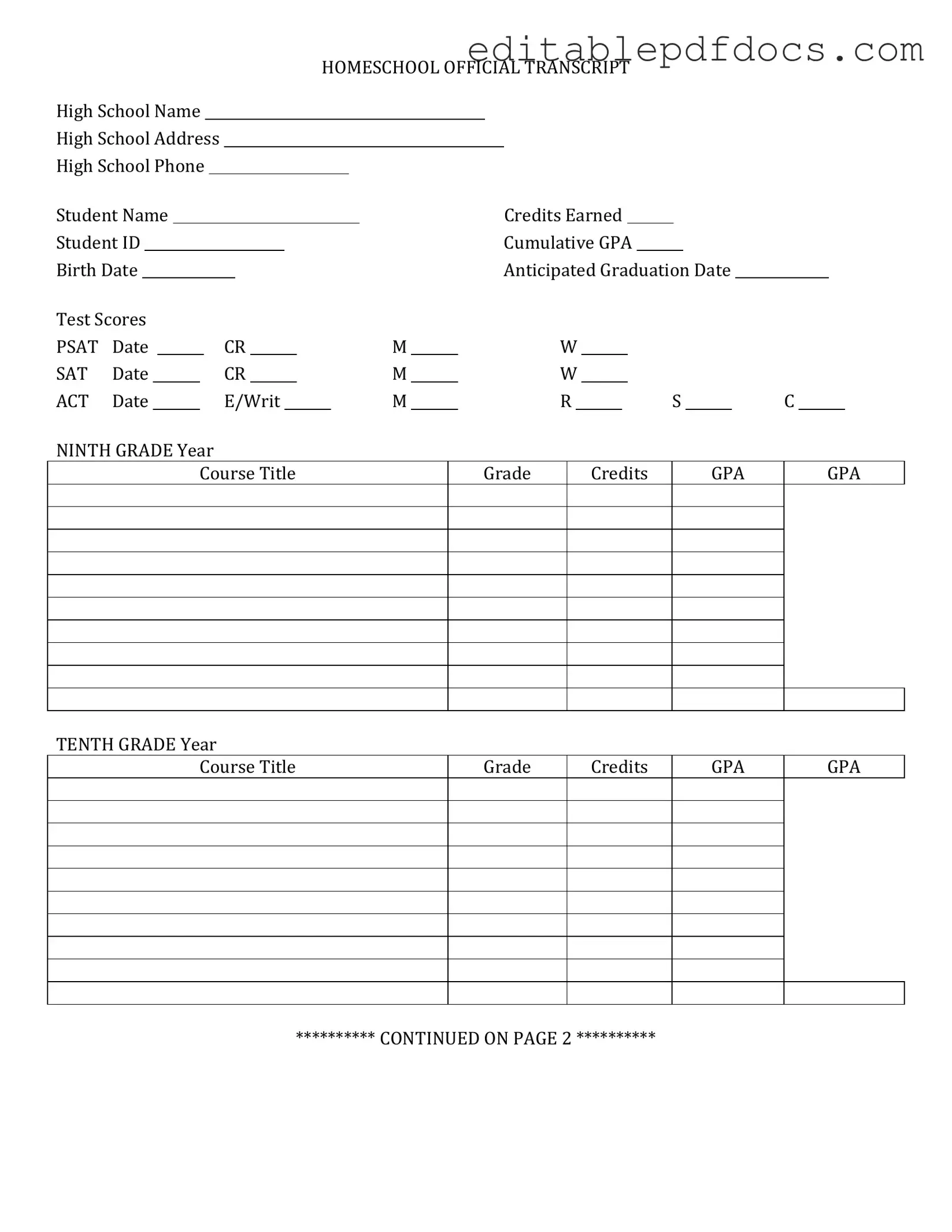Completing a High School Transcript form can be a straightforward task, but many people make common mistakes that can lead to delays or complications. Understanding these pitfalls can help ensure that the form is filled out correctly and efficiently.
One frequent mistake is inaccurate personal information. Students often overlook the importance of providing their full legal name, date of birth, and contact details. Any discrepancies between the information on the transcript and official identification can cause issues during the application process.
Another common error involves failing to include all relevant courses. Students may forget to list certain classes, particularly electives or courses taken during summer sessions. Omitting these can result in an incomplete academic picture, which may affect college admissions decisions.
Some individuals neglect to double-check their grades before submitting the form. Mistakes in grade reporting can lead to misunderstandings about a student's academic performance. It is crucial to ensure that all grades are accurate and reflect what is recorded in the school's system.
Additionally, many people do not pay attention to submission deadlines. Each institution may have different requirements regarding when transcripts need to be sent. Missing these deadlines can hinder a student's application process, causing unnecessary stress.
Another mistake is not providing the correct recipient information. When sending transcripts, it is essential to ensure that the address or email of the college or organization is accurate. Incorrect information can lead to delays or lost documents.
Some students also fail to sign and date the form. A signature is often required to validate the request for the transcript. Without it, the form may be considered incomplete, resulting in further complications.
Lastly, not following up after submission can be a significant oversight. It is advisable to confirm that the transcript has been received by the intended recipient. This step ensures that everything is on track for the application process.
